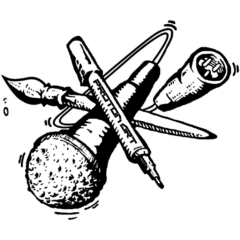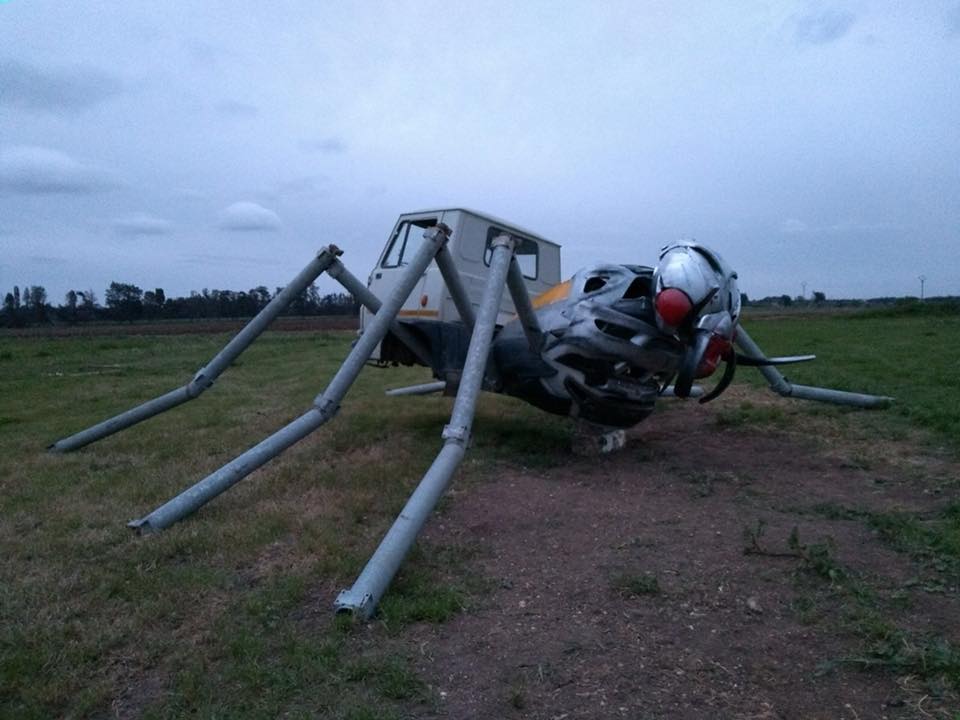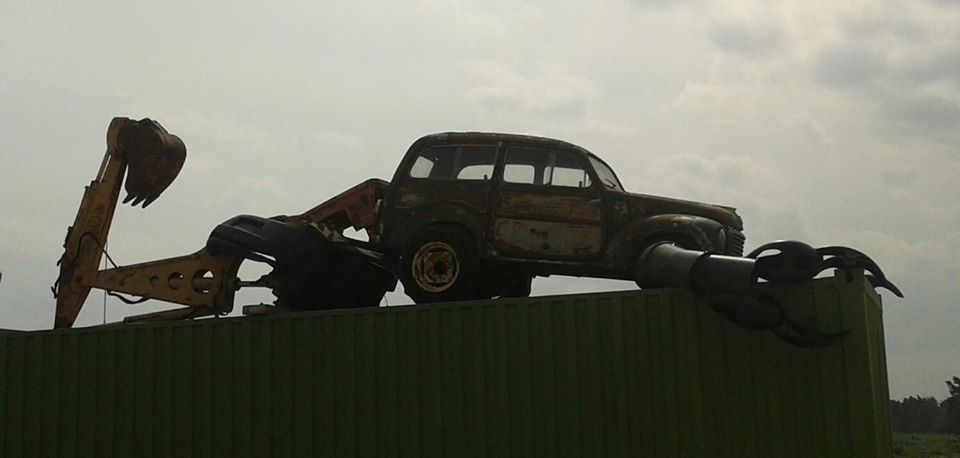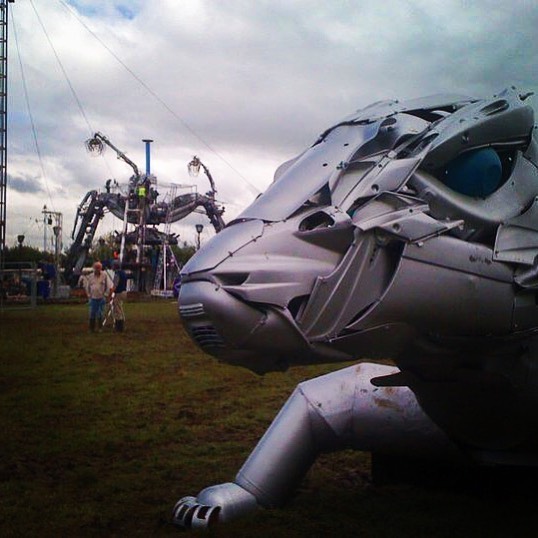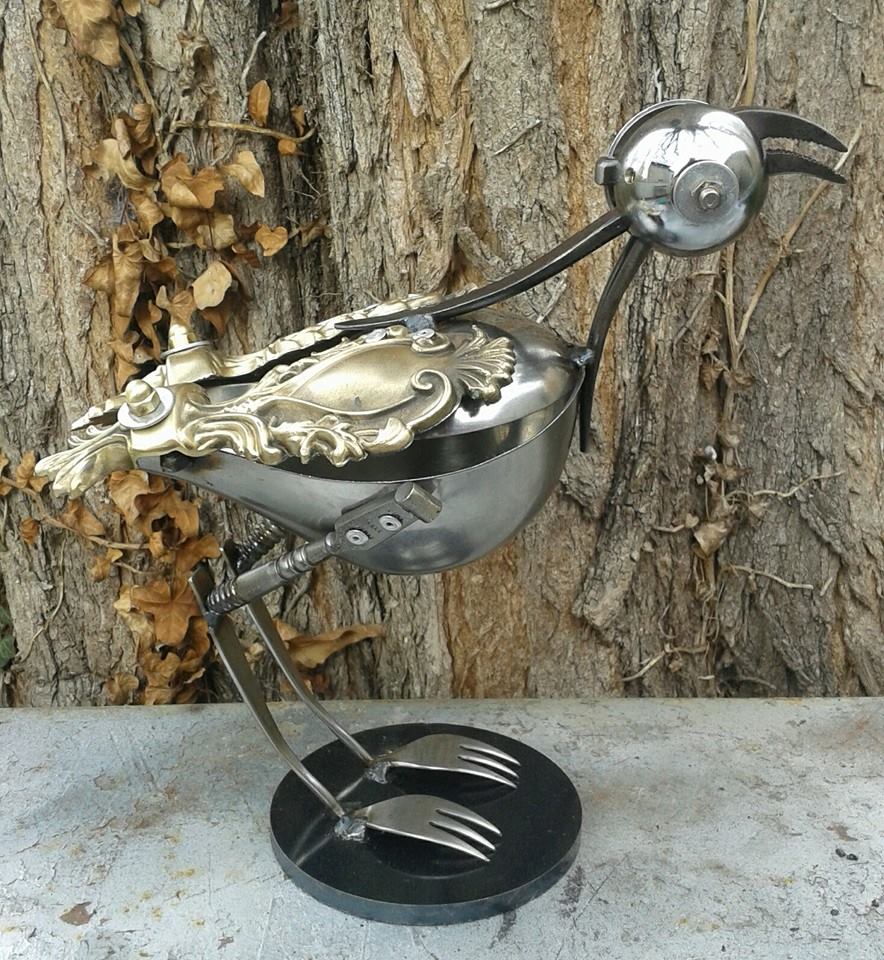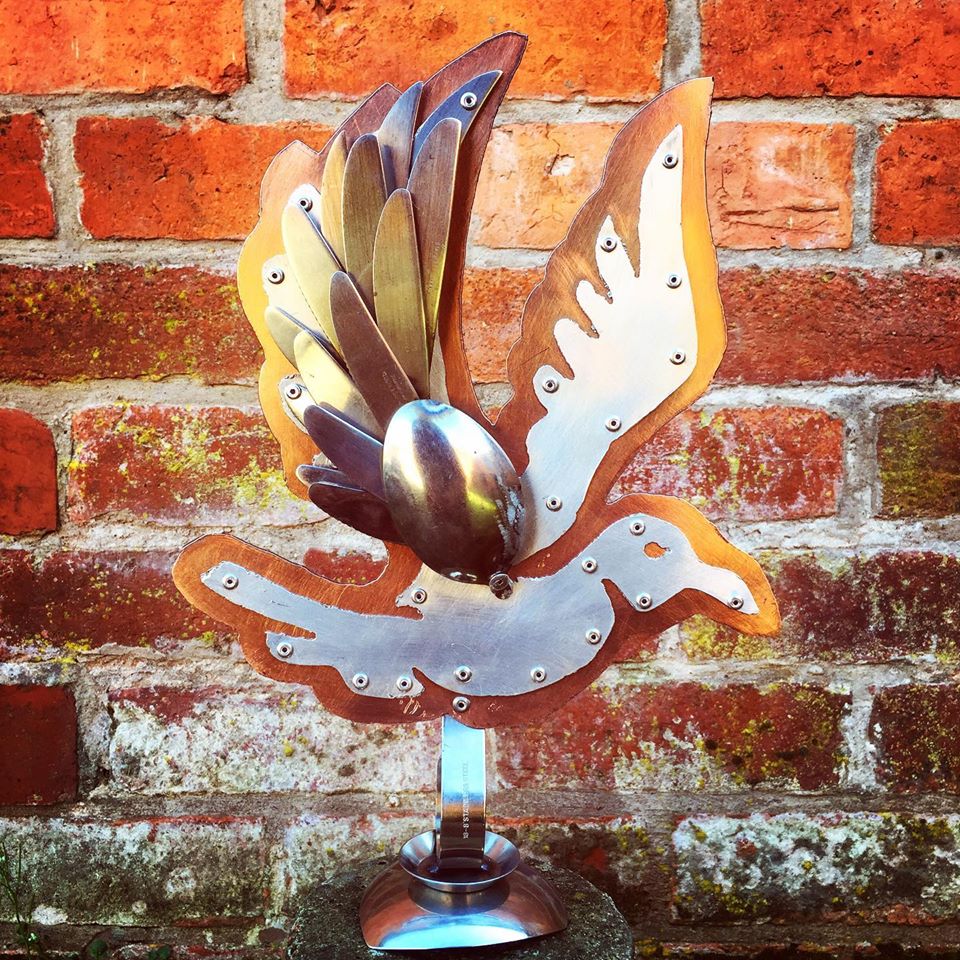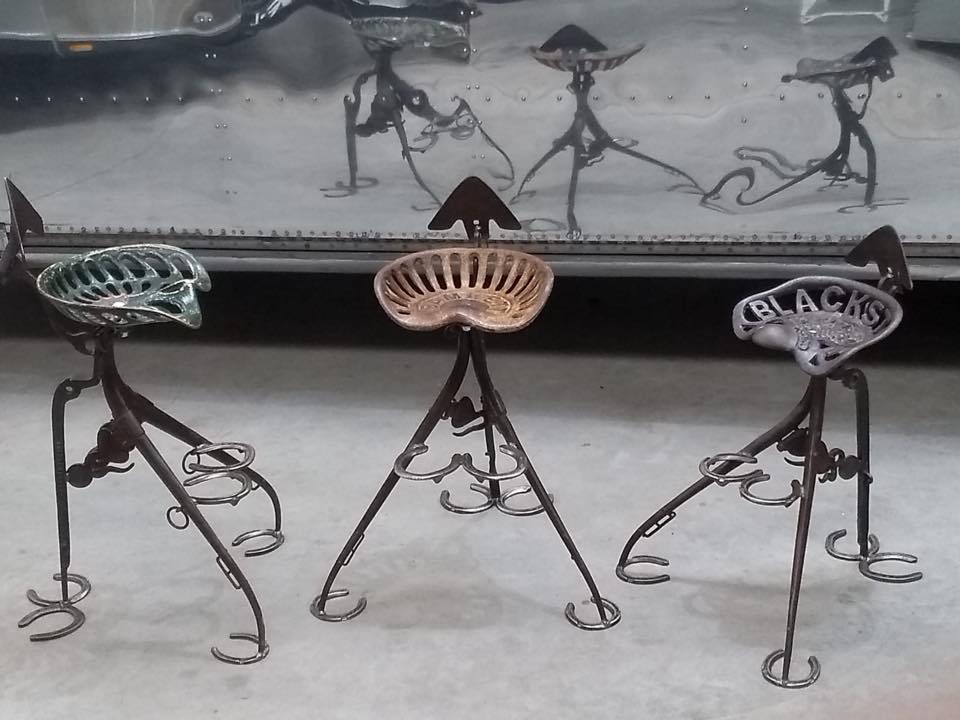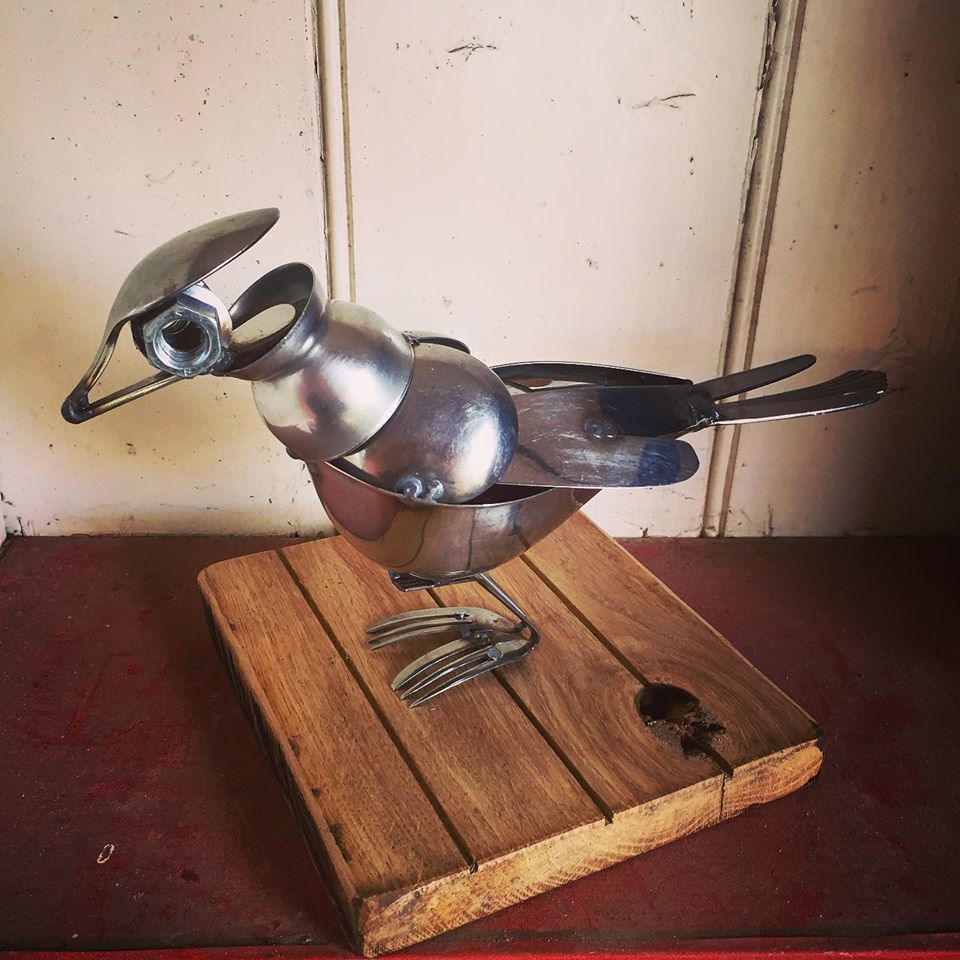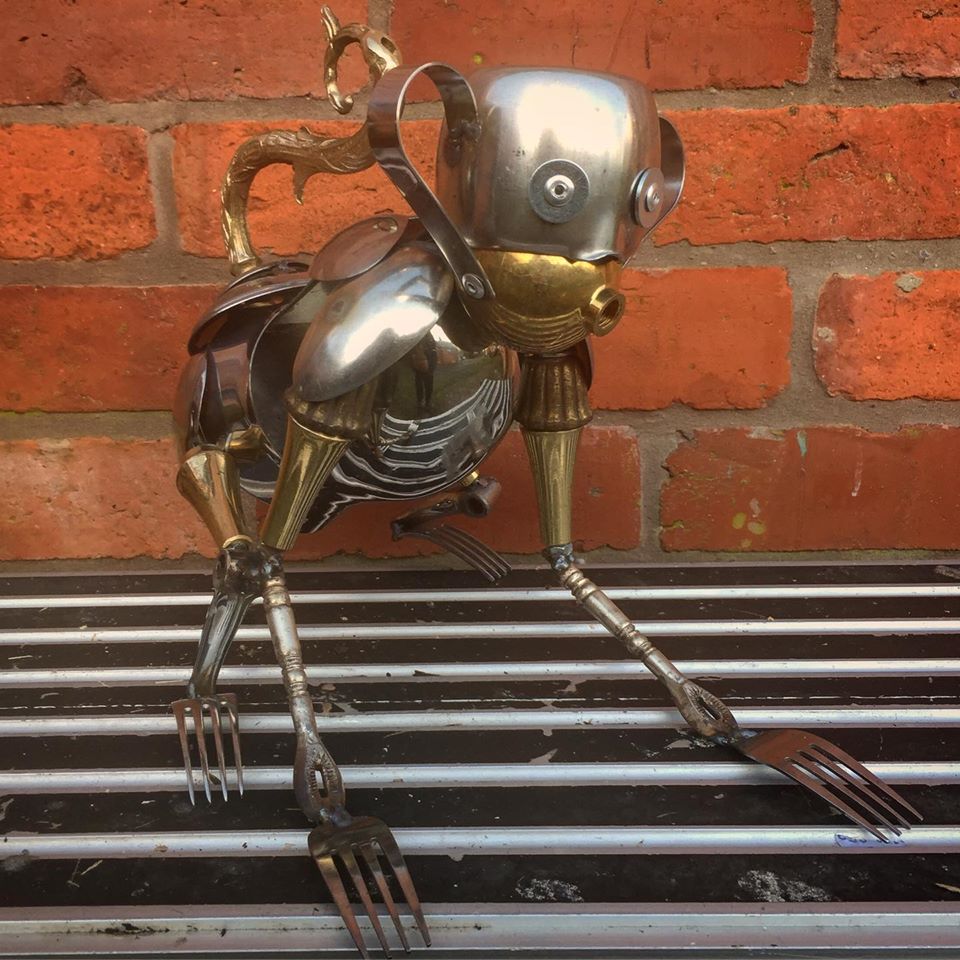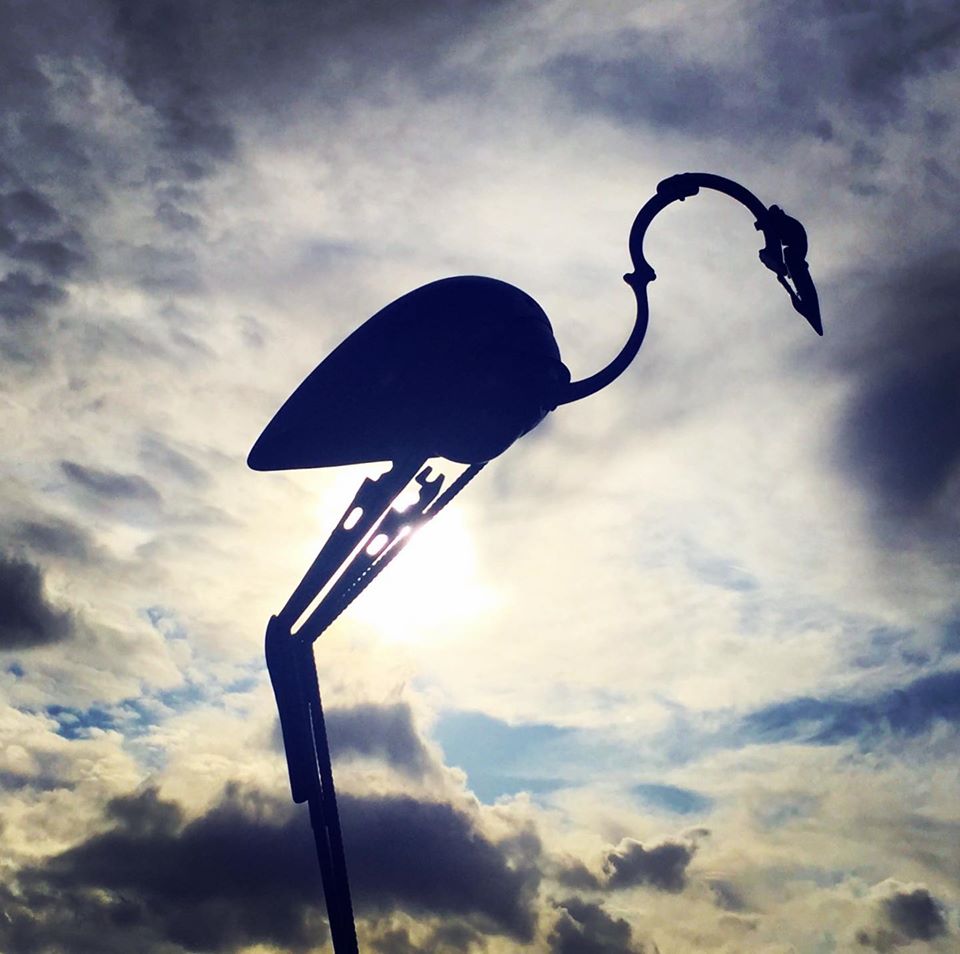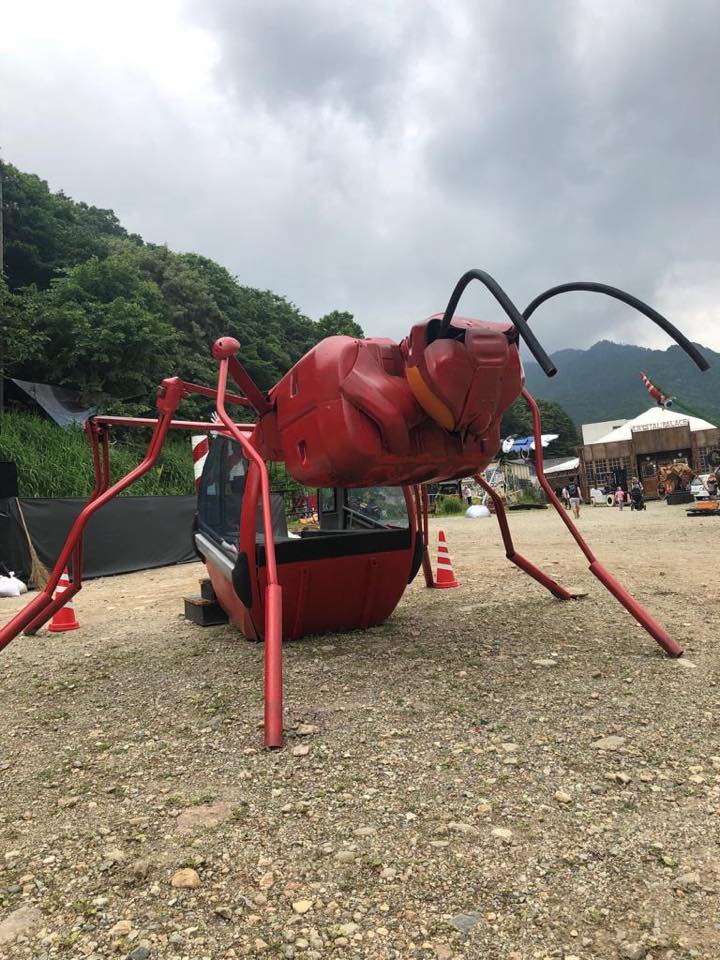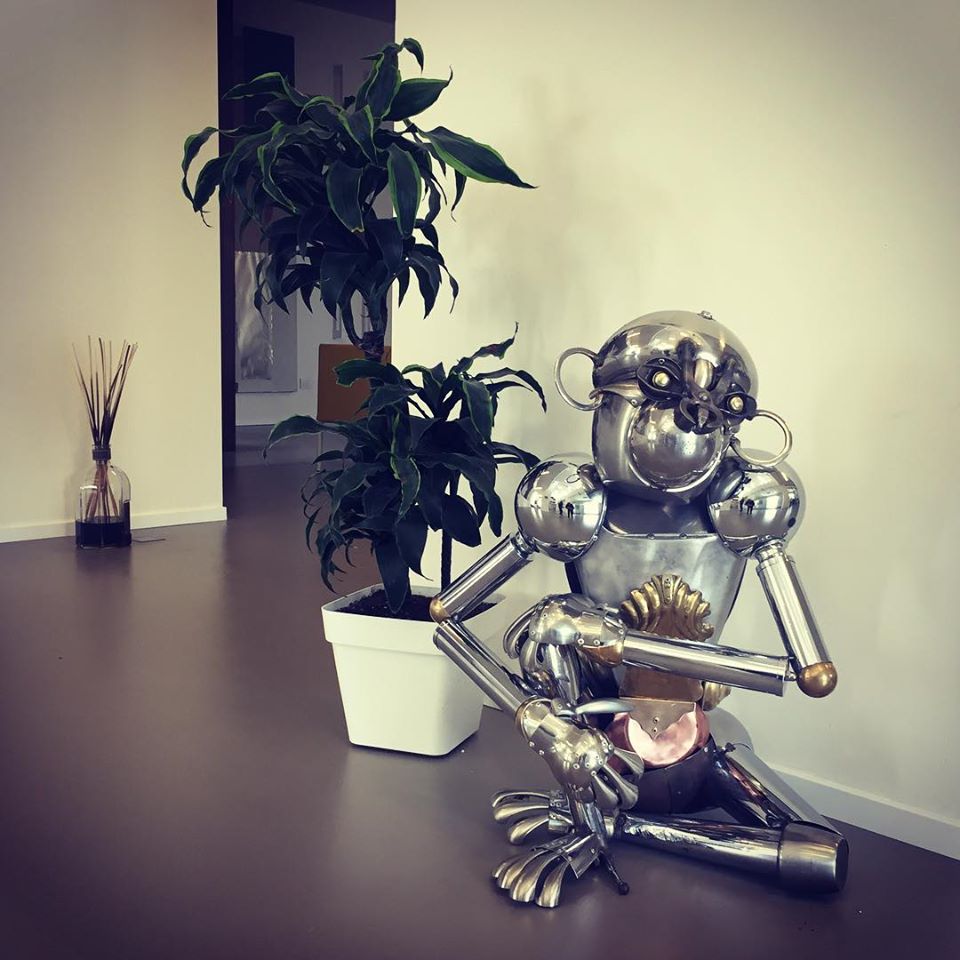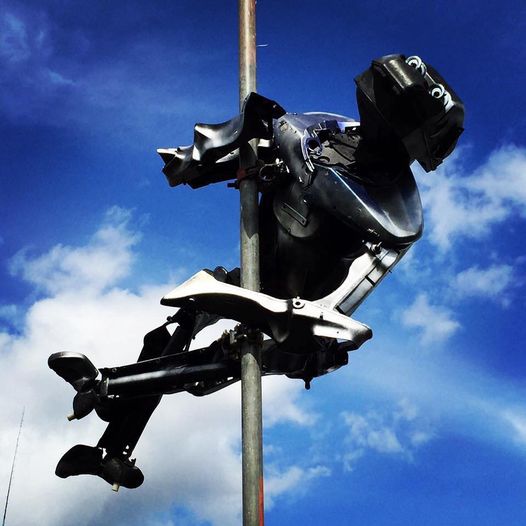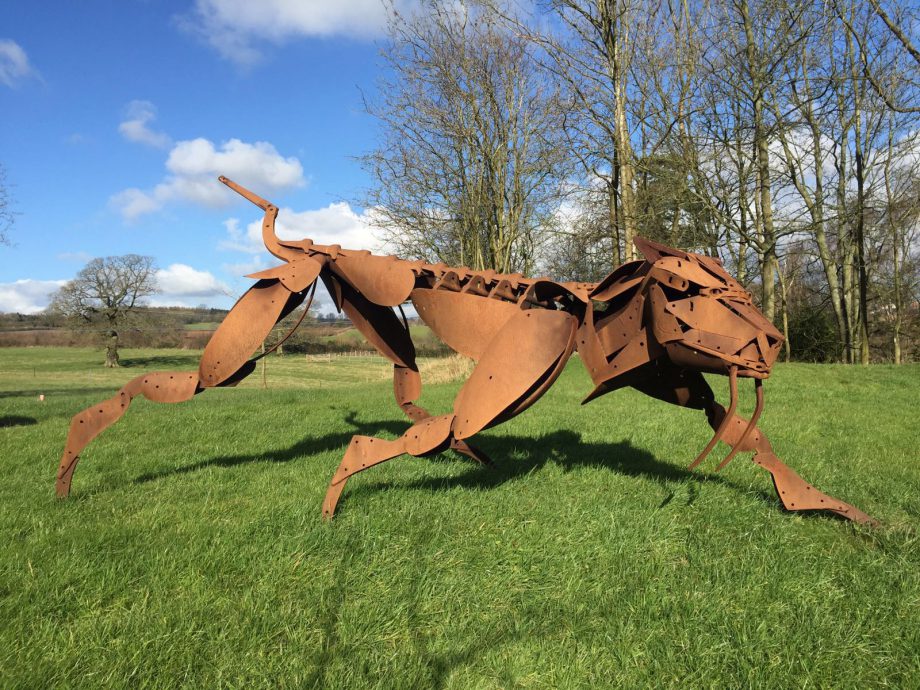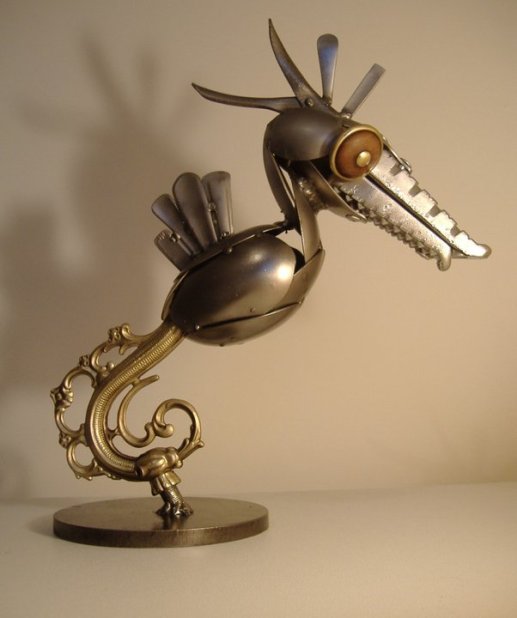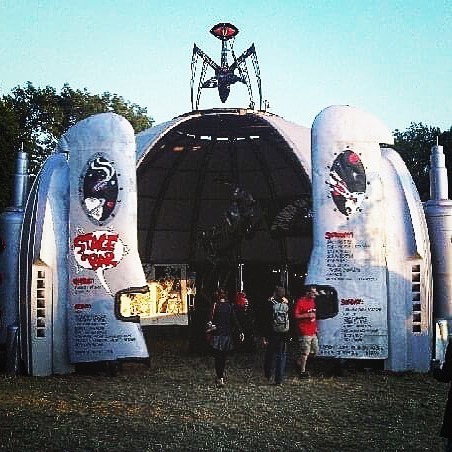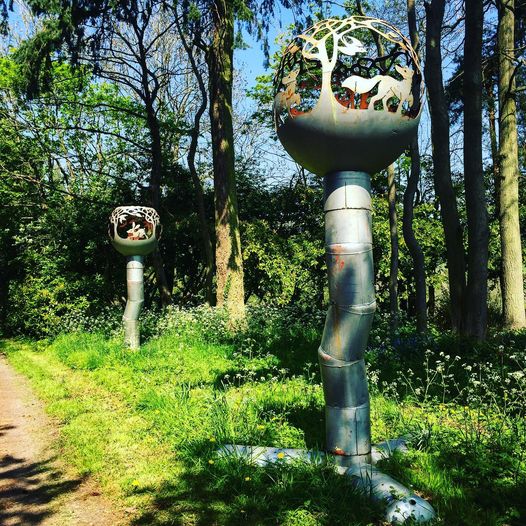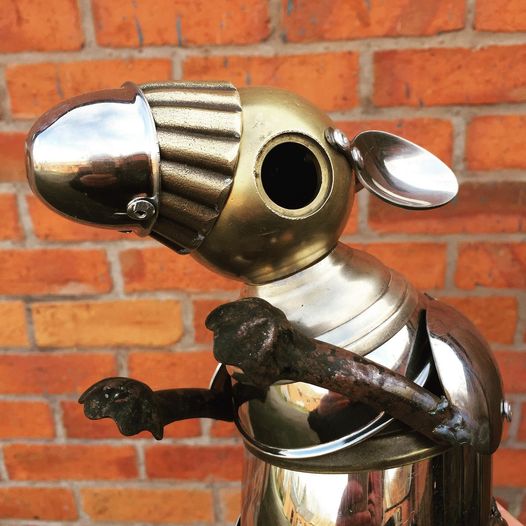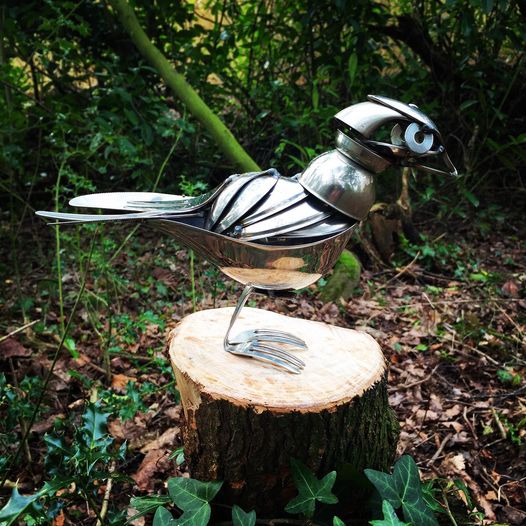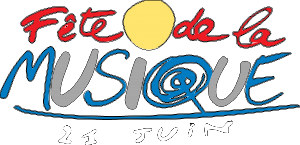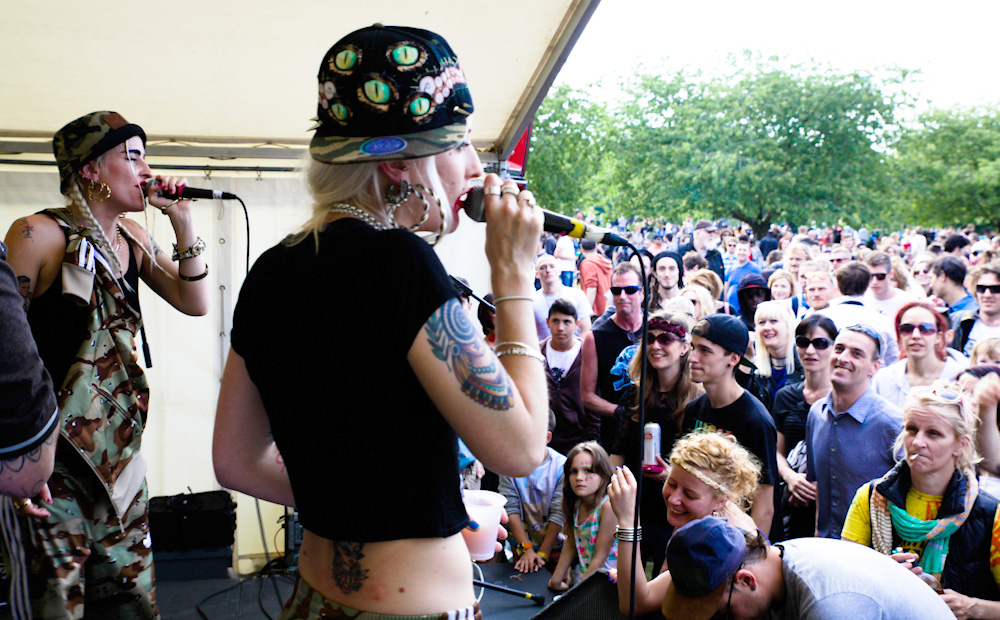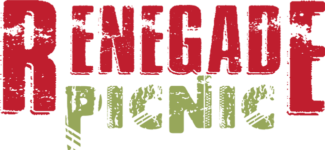In the early 1990s, a disused quarry in north Italy was transformed into one of Mutoid Waste Company’s main hubs.
After a number of successful legal battles against eviction, Mutonia remains firmly rooted and continues to reuse, recycle and turn things once cast out and forgotten into mind-blowing art creations.
We asked some questions to a few members of the MWC about their amazing place and community.
In this first part of the interview, Debs Wrekon told us about her story, her art and about Italy’s most underrated art gallery.
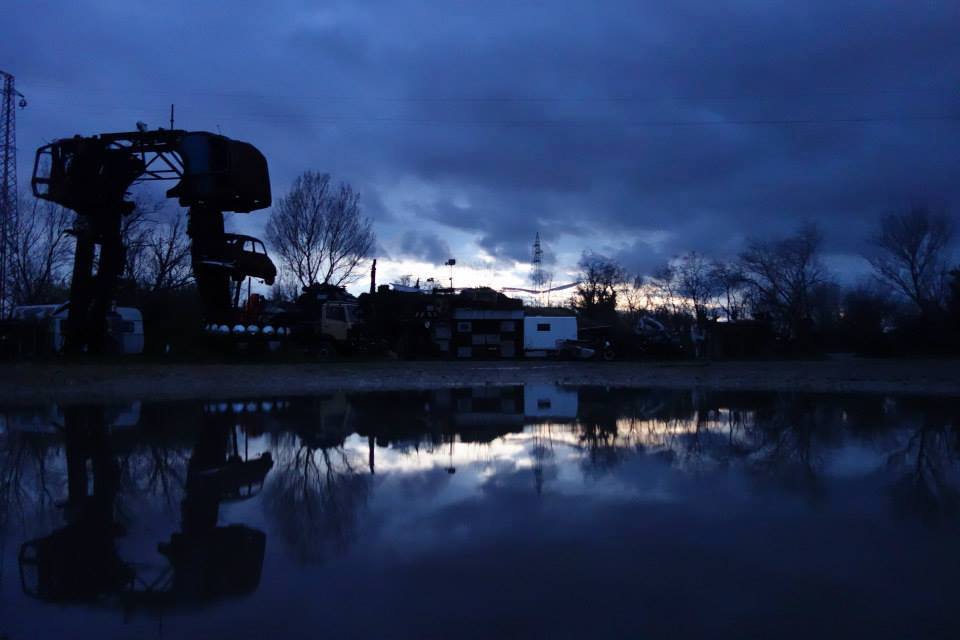
Introduce yourself and your art
“I’m a travelling artist called Debs Wrekon. I divide my time on site in the UK, at an artist community in NE Italy (Mutonia) and the rest of the time on creating artwork on the festival circuit.”
“I’m a self taught metal worker and use scrap metal and other found objects as my main source of material. My artworks range from sculptural jewellery to structures several metres tall.”
“I work freelance most of the time but do collaborate with groups such as The Unfairground and Arcadia.”
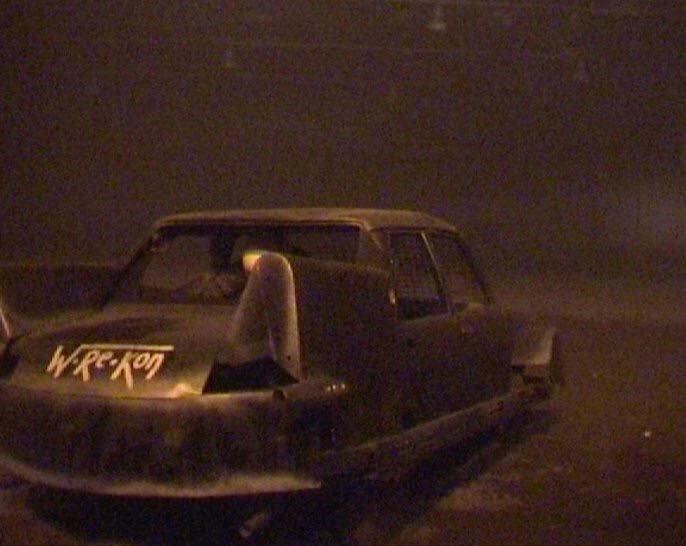
When and how did you get involved with Mutoid Waste?
“I was aware of the MWC through the underground press during the late 80’s and after a chance meeting in my local pub with a few of the group I kind of ran away with their circus.”

“After Castlemorton and the summer that followed we decided to drive my old circus truck and meet up with the Mutoid group that was living on Potsdamer Platz in Berlin (which included Joe Rush), that would’ve been autumn 1992. As winter drew on it got (obviously) really cold – I was busking to put food on the table – so when we got invited to Mutonia in Santarcangelo (near Rimini) for Xmas we jumped at the chance and siphoned our way down.”

“At that point it was the Mutoid yard really – the group lived, worked, ate communally; everyone had their own living vehicles but it was definitely all for one and one for all – we even shared the tobacco.”

“I came and went over the next 7 years (living full time in Mutonia from Xmas ‘92 until summer ‘94), then in Macchia Nera (Pisa) until spring ‘97, Cascina via Vaiano Valle (Milan)during the summer of ‘97 then Fintech from the winter of ‘97 until some point in 1999). However during all of those years I had a close rapport, coming and going, with Mutonia and made my money from artwork, sculptures and busking.”
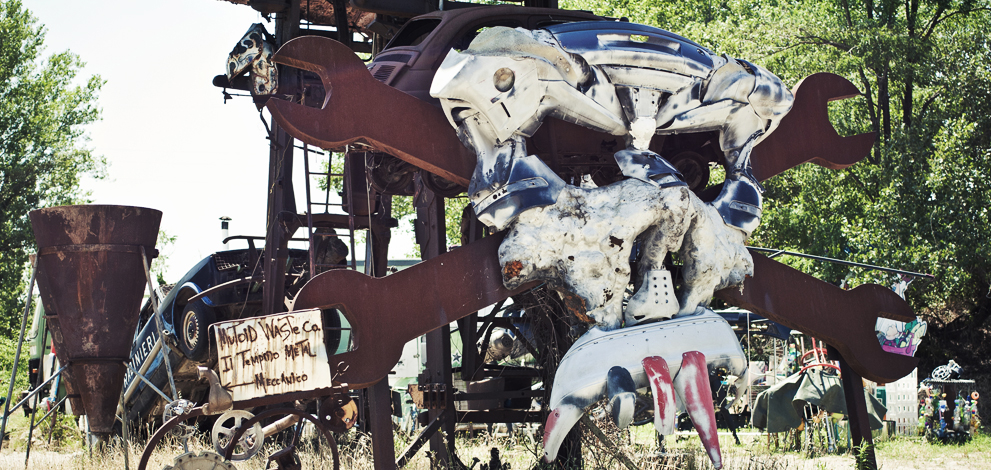
Can you remember the first sculpture you made?
“I was involved in group projects and was responsible for quite a few party flyers and sculpture paint jobs over the years but I started making my own sculptures around ‘97/8”
“One of the first I made was an alien character (most of my artwork is figurative – I particularly like creating animals) which stood about 1.5 metres tall. He lives in Torino now, bought by the owner/boss of Kappa clothing”
“I enjoy making small table top pieces the most and the first one I remember selling was a shark made from a motorbike headlight and some meat hooks”
Is there a piece of art you made that you are particularly proud of, or consider special for any reason?
“My favourite sculptures are always the one I’m working on – I enjoy the challenge – not all of them end up the way I intend them to be; I suppose if I had to choose favourites it’d probably be my animal trophy heads which involve antlers, horns, skull and metals”
Has it become more difficult to find good usable scrap material for your art in recent years?
“Obtaining materials has become more challenging over the years – changes in the law regarding H&S and waste treatment means I can’t wander in to any old scrapyard, or go knocking door to door for old iron, like we used to. But there are ways round it. I spend time mooching round second hand shops, tat markets and there is ofcourse all the online resources (including eBay!)”
What’s your creative process? Do you see an object and create a sculpture around it? Or do you start with an idea and look for materials to create it?
“These days I work a lot to commission on the smaller sculptures so I know the type of tat I’m looking for – I use a lot of kitchenalia (I like to say it’s a feminist statement!). But sometimes I’ll see a piece and think, for example, “wow that looks like a ducks beak” and so a duck gets “born”. Creating the larger artworks for festivals is a bit more liberating as normally I propose a sculpture (or dry hire those I have) and so that’s down to what materials I find and how they inspire me”
Describe Mutonia and how it has changed over the years
“I got together with Strapper in ‘97 and we moved back to Mutonia in 1999”
“The yard has changed quite a bit over the years – communal living went out of the window before the turn of the century (!), people have become more settled and various court cases brought against us by our disgruntled neighbour have changed how the yard looks and functions”
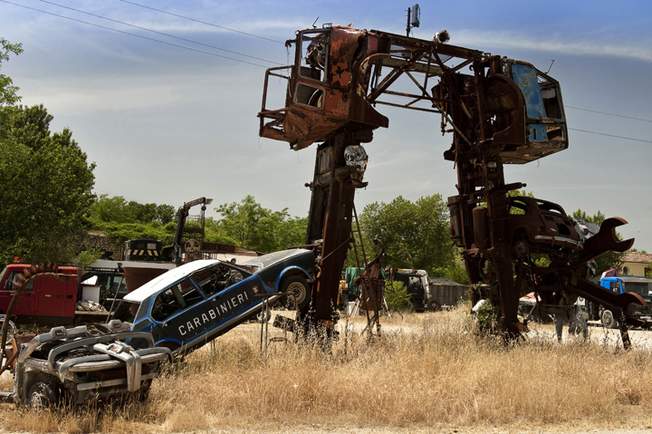
“It’s now recognized as a place of cultural importance – we have a relationship with the Belli Arti and have supporters amongst the artistic establishment. It’s classified as an open air exhibition/living museum – a unique reality in Italy”
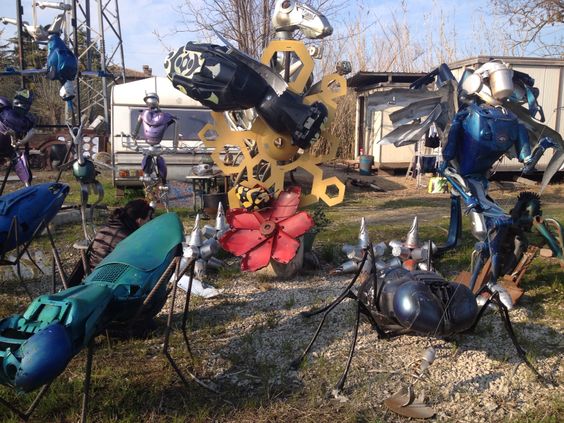
How is the relationship with the community of Sant’Arcangelo? Do you think Mutonia has been a positive influence on Sant’Arcangelo and its surroundings?
“I’d like to think we’ve helped to put Santarcangelo on the map and we’re definitely an integral part of its contemporary cultural identity”
“Mutonia is on the outskirts of the town in an old abandoned quarry on the banks of the Marecchia river – we don’t own it and pay a nominal rent fee”
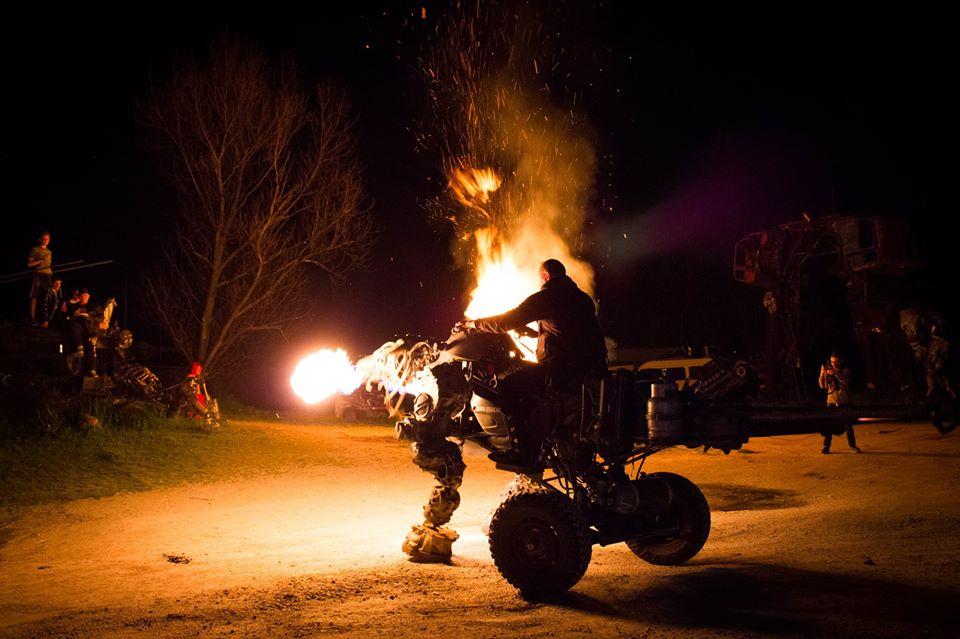
“We all have our own “plots” with quite substantial living spaces and individual artist workshops – even these structures are made from recycled materials; we’ve tried to cultivate as much greenery as possible around these structures – when we arrived it was pretty barren”
“The group consists of about 20 creatives – not all of them are Mutoids these days. We are sculptors, painters, crafts people, musicians – the vice mayor of our local town lives on site and she’s been instrumental in helping save Mutonia from eviction over the last 10 years. I should add that when she moved on she had no political ambitions at all!”
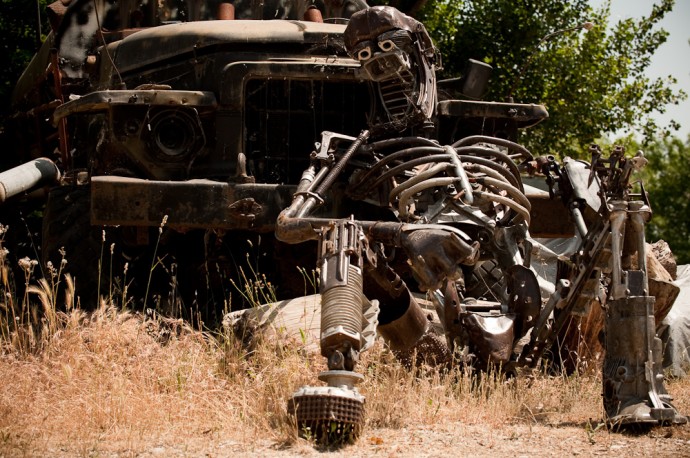
“On the whole we are welcome and accepted by the locals – after 30 years we’re very much integrated, well known and well liked; several kids have now been raised and schooled there”
“Over these last 30 years things have changed a lot – when we arrived in Santarcangelo it was an agricultural market town, now it’s become quite “borghese” – lots of boutiques, cafes, bars and niche restaurants. We’ve also changed and diversified – people have developed and honed their artistic styles, we work less and less as a group and network more with other likeminded individuals”
Mutonia is, among many other things, a free-entry open-air art gallery. Do you get many visitors?
“It’s certainly a bit of a tourist attraction – we’re open pretty much every day and there’s usually visitors, weekends and the summer months are particularly busy. It’s not just types who visit but everyone and their granny looking for a cultural hit”
With the world and technology evolving so quickly, what do you think will have the biggest impact on your way of life in the future?
“There was always the underground in Italy and we were always involved with CSOA’s and other political/cultural associations – that’s definitely been facilitated by the development of the internet and mobile phones”
“Back in the day we had one land line, now (as pretty much everyone else) we all have smartphones – masses of information (both true and false) and easy access to the whole of the outside world….in your pocket! We are all becoming reliant on that and the “easiness” of it all; but there is the flip side – it makes us easy to track and monitor and that, I think, will have the biggest impact on our way of life in the future. I know that in this day and age we wouldn’t have got away with some of the things we did back then but I reckon every generation has those that think outside the box and there’s hope!!”
Mutate and Survive
X
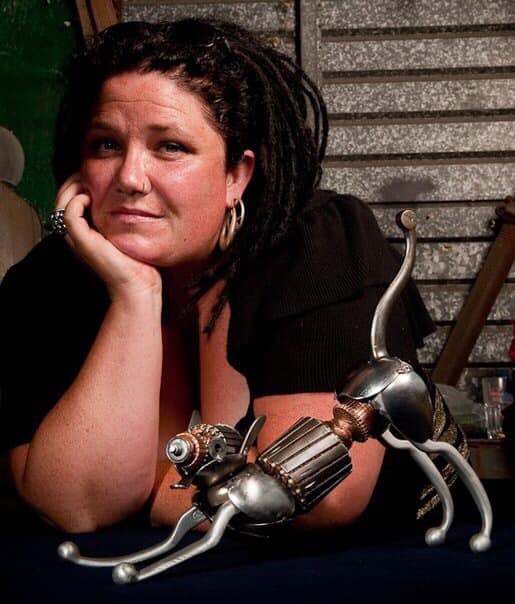
Debs Wrekon
www.wrekon.com
Wrekon – Mutoid Waste Co.
Instagram: @wrekondebs
(Archive photo by DANIELE BARRACO Photography)
To be continued….
